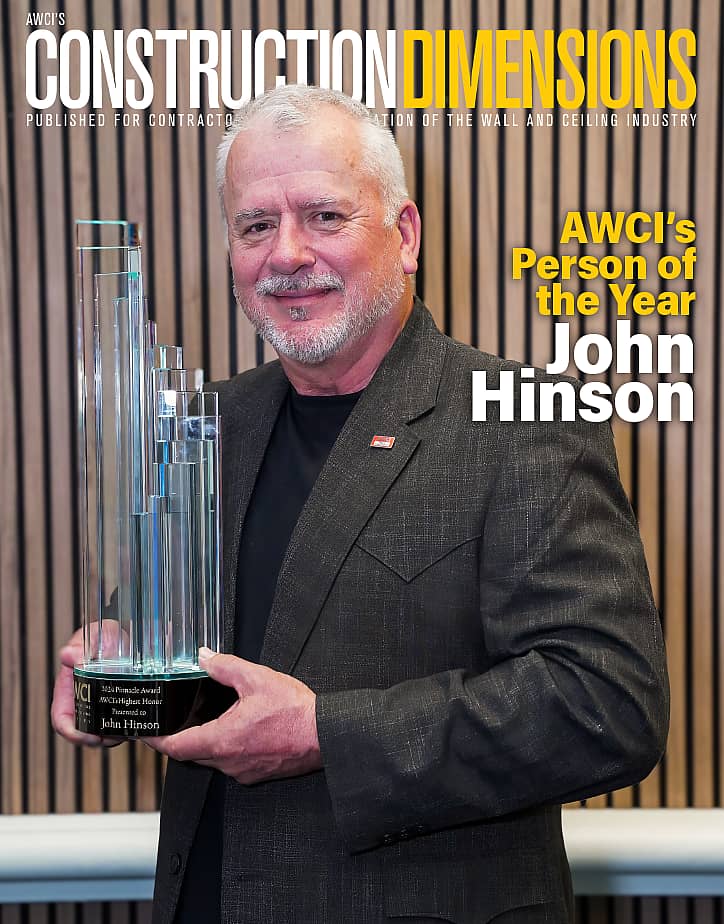Every industry is having to come to terms with its impact on the planet. The latest corporate responsibility buzz term to surface is “being nature positive”—interacting with nature in a way that’s regenerative, and not just extractive.
“[Companies] have to understand their impact on natural resources and ecosystems and if they’re using those resources in a way that’s sustainable and can be replenished,” writes Dee Yang, a partner in McKinsey & Company’s New York office, in an April 2023 article.
Let’s talk about why “being nature positive” is important to wall and ceiling contractors, building materials manufacturers and industry suppliers.
Nature Positive: A Roadmap
Recently, McKinsey published a 132-page paper entitled, “Nature in the balance: What companies can do to restore natural capital.” The report covers “how demands on natural capital are affecting the planet” and proposes steps to address those impacts.
“For much of human history, demands on natural capital were well within what the planet could provide,” says the paper. “Now, however, population growth and increases in per-capita consumption are depleting the world’s stock of natural capital more quickly than it is being replenished.”
McKinsey says 51% of companies acknowledge biodiversity loss in some way, but only 5% have set quantifiable targets to address the problem. Companies are still learning how to set nature-related goals. Most don’t know what to do. We lack standardized approaches to measuring natural capital, which is a subject for research and further debate. How does a wall contractor trace its activities to forest cover losses? Can a ceiling contractor even calculate how the acoustical tiles it uses contributes to chemical and plastic pollution?
“Many companies [don’t] know what steps to take beyond simply acknowledging the challenge of nature degradation,” McKinsey says.
Are we, then, off the hook from doing nature capital calculations? Far from it. McKinsey has specific recommendations for construction, and they include making changes. The “Nature in the balance” paper, for example, calls for the recycling of construction plastic, which it says is “low cost.” The paper also recommends “the substitution of plastic building materials with nonplastic alternatives.” On this latter point, McKinsey has in mind “foam building insulation,” which it assumes “can be replaced with nonplastic alternatives.” Don’t be surprised if general contractors ask about the insulation boards you use.
The problem of biodiversity loss—the decline of species and ecosystems making our ecological systems too damaged to function properly—may have you scratching your head on what to do about it. Even so, customers may wonder about the materials you purchase and ask you about alternatives.
If you’re not sure where to start, I recommend checking out McKinsey’s “Roadmap for Corporate Action” in the paper. The roadmap has four steps:
First, assess your company’s nature footprint*.
Then identify a set of activities, or levers, that could reduce impacts on nature.
Third, set initial targets and integrate them into your business operations.
And finally, monitor the actions and disclose your progress.
Planetary Boundaries
This column, InSync, tries to stay head of the curve—ahead of future disruptions and ahead of developing market opportunities. Customers and suppliers, and likely the public too, will look to you to set the example in helping to replenish our planet’s nature capital.
This means more than just doing something about climate change. Sustainability also involves the planetary boundaries of biodiversity loss, land use change (an issue for the concrete, forestry and steel industries), freshwater use, ocean acidification, biogeochemical cycles (carbon, nitrogen and phosphorus), stratospheric ozone depletion, atmospheric aerosol loading and novel entities (the amount of human-made chemicals and materials causing ecological harm).
One day, customers and regulators could hold you accountable for your impacts in these areas. They may also hold you accountable for impacts your suppliers make, whether traceable or not. But this can be a good thing. “Taking action on nature is not another burden,” McKinsey says. “It could bring tangible benefits to both natural capital and company revenue.”
If you’d like a copy of the McKinsey paper (*see page 82 for how to measure your company’s nature footprint), I’m happy to email it to you. Reach me via the LinkedIn link below.
Mark L. Johnson writes for the wall and ceiling industry. He can be reached via linkedin.com/in/markjohnsoncommunications.



